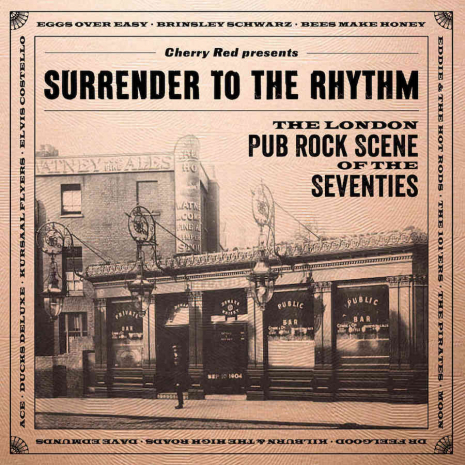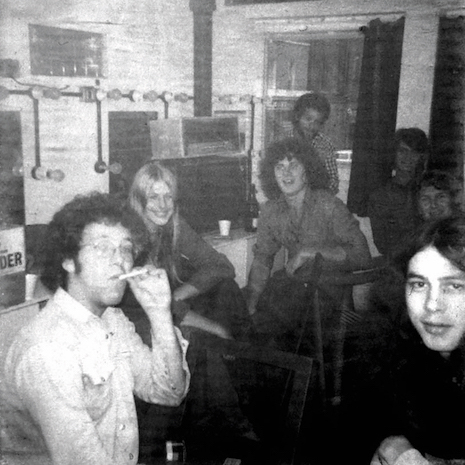
Out this week is the new multi-disc compilation, Surrender to the Rhythm: The London Pub Rock Scene of the Seventies. The collection is an excellent overview of pub rock, a phenomenon that helped paved the way for British punk. Before we get any further, though, we need to address a question many of our readers are probably asking themselves: What the hell is “pub rock?”
Pub rock is a British genre and movement that lasted for a handful of years in the early to mid seventies. Pub rock bands played a back-to-basics style of rock-n-roll that was loose and unassuming. Though very much a London scene, pub rock was kick-started by an American group. In the spring of 1971, Eggs Over Easy were in London recording, when they convinced a local pub, the Tally Ho, to let the band play there on a regular basis. Their subsequent performances at the bar were a popular attraction, and other musicians and pub owners took notice. By 1973, a scene was thriving.
One of the earliest and most popular pub rock acts was Brinsley Schwarz, a group fronted by Nick Lowe. In addition to Lowe, many future punk and new wave players got their start in pub rock bands, including Ian Dury (Kilburn and the High Roads), Joe Strummer (the 101’ers), and Elvis Costello (nee Declan McManus of Flip City). The Jam also got their start playing the pub rock circuit, which is where they were first spotted by Polydor, the label that would sign them.

Dutch picture sleeve, 1973.
By the time 1976 rolled around, pub rock had petered out. Though it didn’t last long, pub rock bands established a circuit for local groups, demonstrating to bar owners that hosting live music was profitable. Punk bands would come to reap the benefits of the successful pub rock circuit, and the stripped-down style of pub rock influenced the sound of punk.

The Razorbacks at the Brecknock.
Surrender to the Rhythm, new from Cherry Red Records, is a three-CD overview of pub rock, containing 71 songs and a 48-page booklet. It spans the years 1970-79, so there are acts on the collection that weren’t part of the scene, but do have some connection to pub rock. An example is the fantastic, new wave-y 1978 single “Driver’s Seat” by Sniff ‘n’ the Tears, a group that spawned from the ashes of pub rock band Moon. A few of the groups on the comp, such as Status Quo, Thin Lizzy, and Mott the Hoople, were so popular they never would’ve played in pubs, but have a similar sound and approach, so they’ve been included. The aforementioned Eggs Over Easy, Brinsley Schwarz, Kilburn and the High Roads, the 101’ers, Flip City, and the Jam are all represented. Surrender to the Rhythm contains a number of previously unreleased recordings, and Dangerous Minds has the web premiere of two of those tracks, Roogalator’s chugging, greasy “Ride With the Roogalator,” and Byzantium’s “It Could Be Better,” which sounds like Badfiner/Abbey Road-era McCartney. They’re on a playlist that Cherry Red has created, which has a few additional highlights from the set. Check it out at the end of this post.
But first, a few more images of pub rockers.

Brett Marvin and the Thunderbolts.
_and_Chas_Hodges_on_HMS_Belfast_1975_copy_465_291_int.jpg)
Chas & Dave aboard the HMS Belfast, 1975.

Byzantium with friends backstage at the Roundhouse, 1975.
Order your copy of Surrender to the Rhythm: The London Pub Rock Scene of the Seventies via Cherry Red’s website or Amazon.